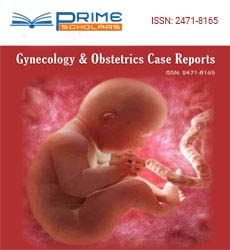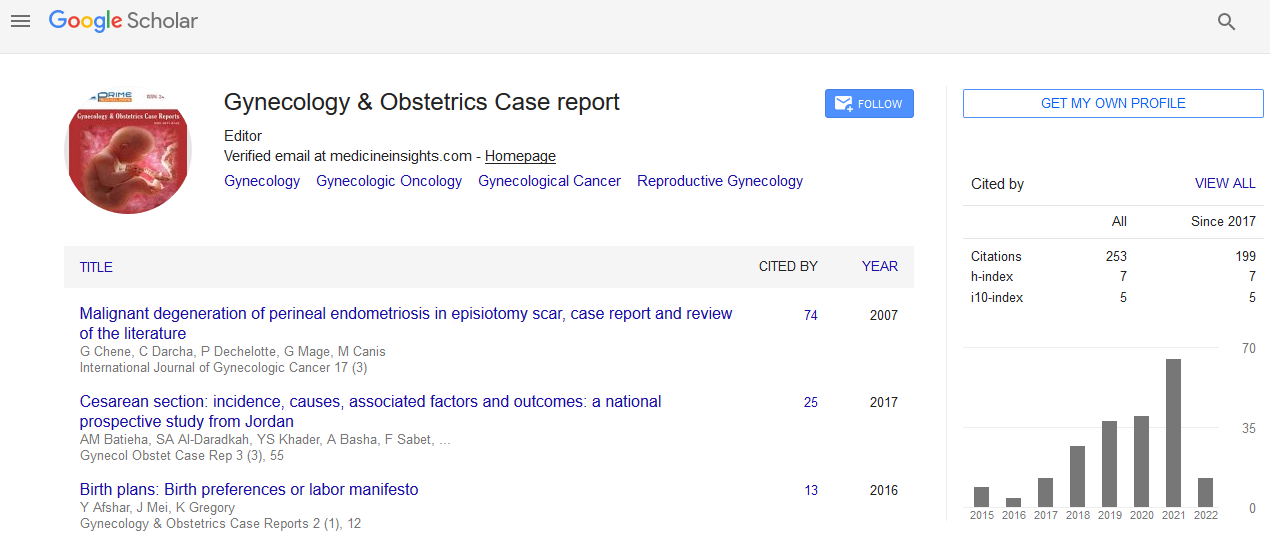Brief Report - (2025) Volume 11, Issue 2
Male Factor in Recurrent Miscarriage: Beyond Female Reproductive Health
Camila Evelyn*
Department of Reproductive Health, The University of Tokyo, Tokyo 113-8655, Japan
*Correspondence:
Camila Evelyn, Department of Reproductive Health, The University of Tokyo, Tokyo 113-8655,
Japan,
Email:
Received: 24-Feb-2025, Manuscript No. ipgocr-25-22703;
Editor assigned: 26-Feb-2024, Pre QC No. ipgocr-25-22703(PQ);
Reviewed: 10-Mar-2025, QC No. ipgocr-25-22703(Q);
Revised: 17-Mar-2025, Manuscript No. ipgocr-25-22703(R);
Published:
24-Mar-2025
INTRODUCTION
Recurrent miscarriage, traditionally considered a condition rooted primarily in female reproductive health, is now increasingly recognized as a multifactorial issue in which male factors play a critical and often underappreciated role. While the focus has long been placed on evaluating uterine anomalies, hormonal imbalances, autoimmune disorders and chromosomal abnormalities in women, emerging evidence underscores the need to broaden the investigative lens to include the male partner, particularly his genetic, epigenetic and seminal health contributions to pregnancy outcomes [1]. The World Health Organization defines recurrent miscarriage as the loss of two or more consecutive pregnancies before 20 weeks of gestation. Historically, clinical protocols for recurrent pregnancy loss have emphasized extensive testing in women, including hysterosalpingography, thrombophilia panels, karyotyping and hormonal assays. However, such an approach often overlooks the potential impact of male reproductive factors. Recent studies indicate that up to 50% of cases of recurrent miscarriage may involve a male contribution, whether through chromosomal anomalies, DNA fragmentation in sperm, epigenetic defects, or impaired seminal plasma function [2].
DESCRIPTION
Sperm DNA fragmentation has emerged as one of the most significant male-related contributors to recurrent miscarriage. Unlike standard semen analysis, which evaluates concentration, motility and morphology, DNA fragmentation assays assess the integrity of the genetic material carried by sperm. High levels of fragmentation are associated with increased rates of miscarriage, even in cases where fertilization and implantation occur successfully. This fragmentation may result from oxidative stress, infections, environmental toxins, smoking, advanced paternal age, or varicoceles, all of which can compromise sperm quality and embryo viability [3]. Chromosomal abnormalities in sperm, such as translocations or aneuploidies, represent another critical aspect of male factor infertility.
Couples who experience recurrent pregnancy loss are often advised to undergo karyotyping and it is not uncommon to discover balanced chromosomal translocations in the male partner. While these rearrangements may not affect the carrier's health or fertility directly, they can lead to embryos with unbalanced chromosomal content, resulting in miscarriage. In such cases, assisted reproductive technologies such as In Vitro Fertilization (IVF) with Preimplantation Genetic Testing (PGT) may be recommended to enhance the chances of a successful pregnancy. Epigenetic alterations in sperm, particularly aberrant DNA methylation patterns, have also been implicated in poor reproductive outcomes. The epigenetic landscape of sperm is essential for proper embryonic development and disruptions in this complex regulatory system can lead to implantation failure or early embryonic loss. Research in this area is ongoing, but it is becoming increasingly clear that paternal epigenetic integrity is as vital as the maternal environment in determining pregnancy viability [4]. Another overlooked but essential factor is the role of seminal plasma the fluid component of semen that supports and protects spermatozoa. Seminal plasma contains various cytokines, hormones and growth factors that play a role in modulating the female immune response to sperm and the developing embryo.
Dysregulation of these immunomodulatory elements may contribute to an inhospitable uterine environment, thereby increasing the risk of miscarriage. Understanding the interactions between seminal plasma and the maternal immune system is an emerging area of interest that may yield new diagnostic and therapeutic insights [5]. Lifestyle factors such as diet, alcohol consumption, smoking, exposure to environmental pollutants and stress also significantly impact male reproductive health. Interventions targeting these modifiable risk factors can improve sperm quality and, consequently, pregnancy outcomes. Antioxidant therapy, aimed at reducing oxidative stress in sperm, has shown promise in reducing DNA fragmentation and enhancing fertility in men whose partners experience recurrent pregnancy loss. The role of advanced paternal age should also not be underestimated. While female age has long been recognized as a risk factor for miscarriage, increasing evidence links paternal age over 40 with elevated risks of de novo mutations, sperm DNA damage and epigenetic alterations. These age-related changes can compromise embryo quality and lead to increased miscarriage rates. In clinical practice, a comprehensive approach to evaluating recurrent miscarriage must include a detailed assessment of the male partner. This should encompass advanced sperm testing, genetic screening, lifestyle evaluation and consideration of paternal age. Collaboration between reproductive endocrinologists, andrologists and genetic counselors is essential for a holistic understanding of the coupleâ??s reproductive potential.
CONCLUSION
Recurrent miscarriage is a complex condition with multifactorial etiology. While much of the historical focus has been on female reproductive health, it is now evident that male factors are equally important in determining pregnancy outcomes. By shifting towards a more balanced and inclusive diagnostic approach that accounts for both partners, clinicians can improve the chances of identifying treatable causes of miscarriage and guiding couples toward a successful and sustained pregnancy.
Acknowledgement
None.
Conflict of Interest
None.
REFERENCES
- Bettendorf M (2002) Thyroid disorders in children from birth to adolescence. Eur J Nucl Med Mol Imaging 29(2):S439-S446.
Google Scholar Cross Ref Indexed at
- Becks GP, Burrow GN (1991) Thyroid disease and pregnancy. Med Clin North Am 75(1):121-150.
Google Scholar
- Roti E, Gnudi A, Breverman (1983) The placental transport, synthesis and metabolism of hormones and drugs which affect thyroid function. Endocr Rev 4(2):131-149.
Google Scholar Cross Ref Indexed at
- Shields B, Hill A, Bilous M, Knight B, Hattersley AT, et al. (2009) Cigarette smoking during pregnancy is associated with alterations in maternal and fetal thyroid function. J Clin Endocrinol Metab 94(2):570-574.
Google Scholar Cross Ref Indexed at
- Bump RC, Mattiasson A, Bø K, Brubaker LP, DeLancey JO, et al. (1996) The standardization of terminology of female pelvic organ prolapse and pelvic floor dysfunction. Am J Obstet Gynecol 175(1):10-17.
Google Scholar Cross Ref Indexed at
Citation: Citation: Evelyn C. (2025) Male Factor in Recurrent Miscarriage: Beyond Female Reproductive Health. Gynecol Obstet
Case Rep. Vol.11 No.2:13.
Copyright: Copyright: © Evelyn C. This is an open-access article distributed under the terms of the Creative Commons Attribution
License, which permits unrestricted use, distribution and reproduction in any medium, provided the original author and
source are credited.

